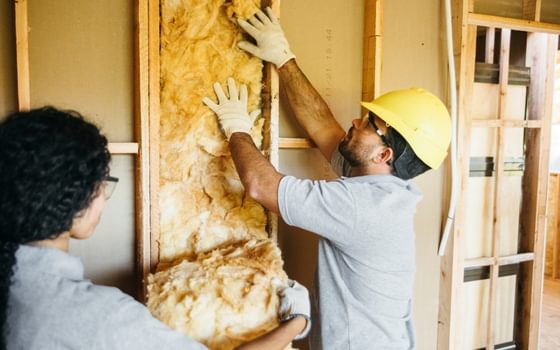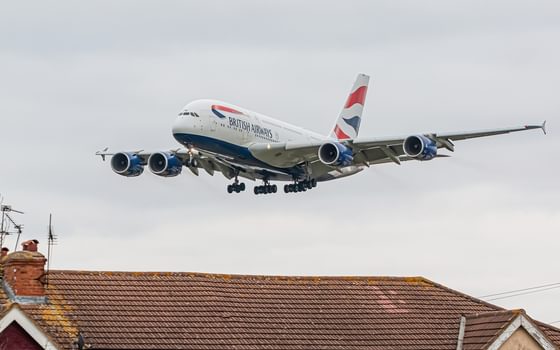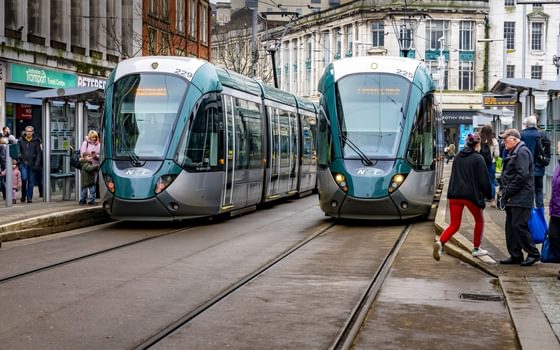Green and pleasant land
As we imagine the world we want to live in after the pandemic, the role of the parks, gardens and green space in our mental health is vital
11 December 2020
This is an article from the second issue of the New Economics Zine. You can read the full issue here
Fingers in soil. Toes in sea. Air in lungs. When you’ve got a mental health problem the very weight of being alive can feel relentless. But, for me at least, my mind is rarely lighter and calmer and my mental health rarely better than when I’m doing something that connects me to the outside.
The black dog that sits and waits; the black cloud that billows large then small then large again; the heavy rock in the pit of your stomach; or the ice-cold boiling-hot juice that runs through your veins as soon as you wake up – whatever it is, there are some days when nothing helps. Truly nothing. And even opening the door to the outside world feels impossible. In those times feeling like you have somewhere safe to be – both inside and, ideally, out – is very important.
We’ve seen this play out in real time in the last few months, in the most extreme ways. If there was ever going to be anything that threw into sharp relief just how important space in the outside world is to our mental health, then a pandemic was surely it.
There are different kinds of space we need to feel safe, and then there are others we need to feel free. There’s the very inner – a warm and safe and secure home. The immediate outer – any outdoor space available to you via your home. The places you live – your immediate streets and community and parks. And then there’s the great outdoors – from the lakes and moors to rivers running through valleys and cities and national parks. And when we are lucky, some of that space is either ours or it’s public.
The provision of public green space is so important – for people’s health and, as we have seen through lockdown, for people’s sanity – somewhere to detach from work, to socialise and to find joy in the every day. The ancient Greeks knew how important public space was, they had central gathering places – agora – in all towns. The Victorians too who, during the industrial revolution, built parks into London as it was growing around them. Often referred to as the city’s lungs parks gave respite to those working in the filth and the soot, rather than just those of a higher class simply taking a turn. And this didn’t just happen in London but in other cites too – in Newcastle, Huddersfield, Derby.
“If there was ever going to be anything that threw into sharp relief just how important space in the outside world is to our mental health, then a pandemic was surely it.”
And so, as we all became enclosed in our homes and time outside became government mandated and exercise-linked, the call of and need for the outside seems, for most, to have become stronger. The pandemic turned our parks from lungs to living rooms – and for many it made all the difference. Because those lungs, which were always there and oft used but never relied upon, have come into their own. Not just, as might have been the original aim of some of our parks, as a valve for relentlessness work but as a space to do the things that make a life a life – to meet, to talk, to play, to celebrate and commiserate, to comfort and love.
But as in many other areas, the crisis highlighted many existing inequalities: private outdoor space is limited, especially in cities, and is usually the preserve of the better-off; public green space is not uniformly good and not everyone feels welcome in it; and in this green and pleasant land a lot of our green space isn’t even public to begin with.
Deprived urban areas were hit hardest when it came to limited access to public space – with the calls to close overcrowded parks likely to hit those on low wages, especially people of colour, harder. As my NEF colleagues Alex Chapman and Jasmeet Phagoora found in their research in April, the proportion of people visiting parks or public green spaces almost halved at the start of lockdown, with the reduction much more pronounced in poorer local authorities than wealthier ones.
The evidence available shows that access to green space is usually more difficult for those on low incomes – ONS data shows that houses closer to green space are more expensive, and a study by a group of academics at Sheffield University found that population pressure on green space could be approximately 60% higher in the bottom income quintile compared to the top. And a Friends of the Earth report identified a ‘green space gap’, with the study finding that almost 40% of people from ethnic minorities live in England’s most green space-deprived neighbourhoods, compared to 14% of white people.
This crisis, which has made all of our worlds smaller, serves as a reminder to fight for easily accessible, high-quality public green space. Guy Shrubsole’s tireless work in uncovering who owns the land in the first place has brought home just how stark the situation is – his work found that half of England is owned by less than 1% of its population. During lockdown Shrubsole, alongside Friends of the Earth, launched a campaign to open up golf courses to the public, as it turns out golf courses not only take up more space in Britain than parks but that they are used by far fewer people – just 1.34% of the population use golf courses whereas London parks alone receive 223m visits in a year. And so if we are to, as Chancellor Rishi Sunak put it recently, do more than simply exist we need high-quality public space that everyone can enjoy to be seen as priority, not just a luxury.
My Dad, the son of wool mill workers in Yorkshire, was born in the nook of a valley. No matter how hard people up there worked, when they left the floor there was always the moors – the horizon. “Among these dark satanic mills?” indeed. Maybe people love that song (Jerusalem) because of its uplifting timbre and the opportunities to shout-sing through or maybe it depicts what people think about when they think about ‘home’. The patchwork of green, trimmed with the blue of the coast you see when you are landing at the airport. When I think of England, I think of green and of sea. My Dad, who no longer lives in his beloved Yorkshire, tells me often about his longing for the moors – of what it means to have been born in a glacier-carved valley in the Pennines. He said that when he first moved away from the moors he yearned for the horizon and after a few years of living in London this was something I came to think of daily. I didn’t grow up in a valley but instead enveloped in a crease of the Shropshire Hills – the kind that Houseman carved his words into. When I started to live more of my life indoors, in offices where windows didn’t open and in cities where you rarely see the stars, I longed to plunge my hands into dirt. And since lockdown, living and working in a one-bed flat, I regularly long to jump into open water.
The last few months have been tough for most of us – the gnawing days of lockdown stretching ahead as we stutter and reach towards the elusive ‘new normal’. Whether it should have done or not, this crisis came in hard and fast and took out a lot of what we had come to know. The structures we’d built, the routines and the dividing lines. But also the little moments of release that reconnected you with the world and dispersed some stress – like the breeze hitting your face as you finally leave work and make your way home. And so, as we cram all of the ripples of our lives into tiny spaces and roll back hard fought and won work/life boundaries, feeling diminished, we search for something to keep us sane, for something to give us those little moments. For the things that make life, life.
For those of us that experience any type of mental illness, the pandemic has thrown up a variety of different issues. As this year has worn on and the world has felt bleaker with every sunrise, many people’s mental health has become worse. For me, the past six months have been splattered with quite a few dark spots, the last few weeks especially so. And not for the first time has the outdoors, the green, the sea, open water and a collection of pot plants been my saviour.
The year after I moved to London, in the aftermath of the pomp of the Olympics, I had a breakdown. I stopped being able to use public transport, which meant I used to get stuck – at work, at home, or on the street outside tube stations. I walked more, saw more, found more parks. As I emerged from this period of serious mental health crisis my friend took me to a plant shop tucked under a railway arch with a corrugated iron roof and I bought my first proper plant. As I started to recover I filled my room and my house to the gills with plants – usually the forgiving cheese plant who survived on the days where I could barely feed and wash myself, let alone them. There was something soothing about their presence and watching them grow – giving something outside yourself life. I began to get better and care more about looking after them, and as I did so I found that looking after myself became easier too.
“… not for the first time has the outdoors, the green, the sea, open water and a collection of pot plants been my saviour.”
This love of (and need to) bring green inside for the days I couldn’t be outside snowballed in the intervening years and my flat is slowing becoming a burgeoning jungle. In lockdown this has spread to the small morsel of semi-private outdoor space I have – a space that is not green and is not somewhere I thought a novice and patchy indoor gardener like myself would have any luck. But the act of pushing your hands into soil, planting a tiny seed and seeing what happens to is, it turns out, enough. There are tiny miracles every time you go out and check. And unlike the many, many other things I’ve tried in the past to occupy my mind, I didn’t mind if I was bad at it. Everything else – painting (is the paper supposed to be this wet), lino cutting (ow that’s my finger), drawing (is that a hand or a foot?), reading (I better just look that up), meditation (am I supposed to be thinking about what I’m having for tea?) just didn’t go that well.
During lockdown seed sales skyrocketed and the Royal Horticultural Society reported that the number of people going to their website for advice grew fivefold. The joy I’ve experienced growing these little plants has endured, whether they’ve lived or died, whether I’ve excelled or just tried. And I guess all of this makes sense when trying to find hope, when digging for optimism – to be able to create something and watch it thrive. A simple pleasure, where the result brings joy, but if it turns out to be a disaster, it doesn’t really matter.
If you think about how so many of us took solace in the green-ery of gardening or the outdoors in this time makes total sense – the connection between a healthy mind and time outside just seems logical. But what it is not is equally accessible to everyone – and it needs to be.
After a particularly bleak blast of news last week I stumbled across an episode of Mortimer & Whitehouse: Gone Fishing set on the River Usk. Both men sat with their wellington-booted feet in the river, cup of tea in their hands, looking downstream as the sun hit the water. I found myself soothed and enthralled. “When my mother-in-law was knocking on”, said Bob Mortimer, “I used to see her staring at a butterfly or a flower with a smile on her face…and I’m beginning to realise…it’s worth living for that, isn’t it?” As we get older, but also as we emerge from this period of being inside or being in one place most of the time, I think we will all start to have those moments more.
As the world starts to return we have to think: what kind of world do we want to find? One with more space to be in, more time to be in it with people we love, more opportunity to marvel at the nature that surrounds us. Not just living to work – but part of an economy that supports us and builds green space not just for us to recover from work and be more productive, but to facilitate a good life, instead of living with eyes trained on a GDP point on a graph. A economy that doesn’t only place value on a forest once it has been cut down.
“As the world starts to return we have to think: what kind of world do we want to find?”
The Reset inquiry alongside the All-Party Parliamentary Group on the Green New Deal heard 55,000 people and found that overwhelmingly people want a greener, fairer country. Meanwhile the Climate Assembly recommended a range of ideas to Parliament for reaching net zero, their main priorities focused on restoring the natural world, local community, and engagement and urgency. And the big man himself David Attenborough, talking about his new series about life on the planet, acknowledged the problematic relationship between the natural world and capitalism, saying: “… you have to have the wisdom to realise that you can live sustainably, that it is possible that your economics could live on a rather different system from the one which is based on profit.”
So what we are waiting for? Let’s use this moment to fight for and build a society, an economy and a world that puts people and planet at its heart. One with secure, high-quality jobs that support a green economy and give people a comfortable amount to live on, more publicly-owned land for us all to enjoy, and more rights to explore the land we don’t own, more paid time off to spend among what we love – people or trees. As Arundhati Roy puts it: “Another world is not only possible, she is on her way…on a quiet day, if I listen very carefully, I can hear her breathing.”
Image: Pexels
Topics Zine Environment Wellbeing






